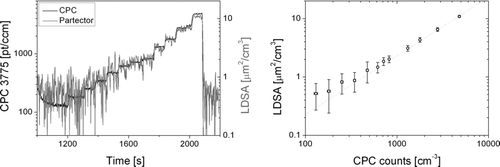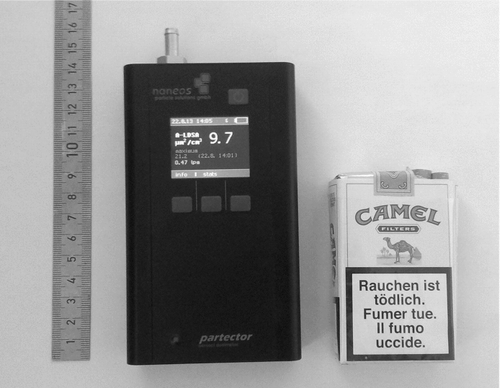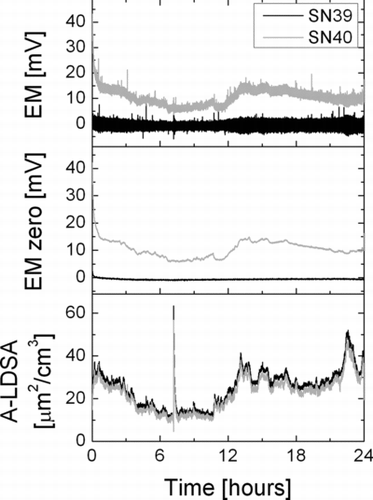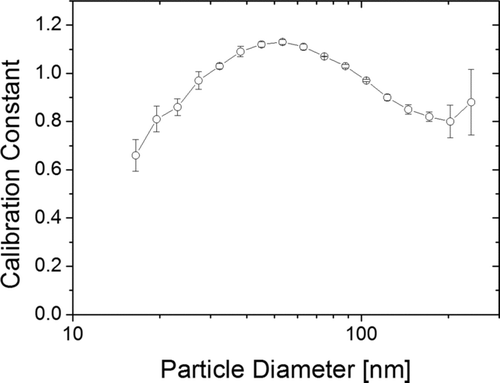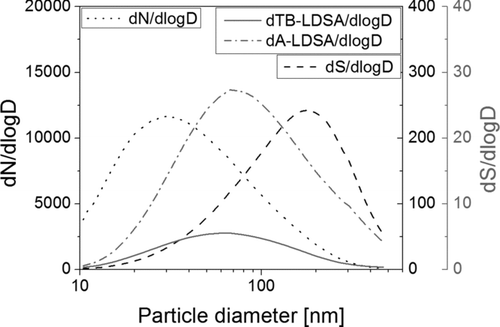Figures & data
FIG. 1 (a) Tube with length L and radius R where L ≫ R, and with grids on both ends, (b) tube with L ≫ R, (c) ring with L ≪ R, and (d) the tube of (b) split into two equal segments.
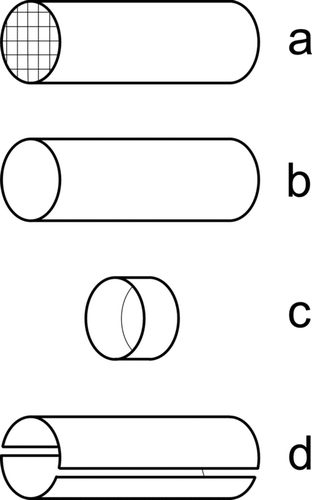
FIG. 2 Scheme of our new instrument. Similar previous instruments use a filter to capture the particles in a Faraday cup electrometer, whereas we use an open Faraday cage.

FIG. 4 Electrometer signal with 50 nm NaCl particles of a concentration of 1.7*104 pt/ccm (gray) and charging current (black) for different pulse settings.
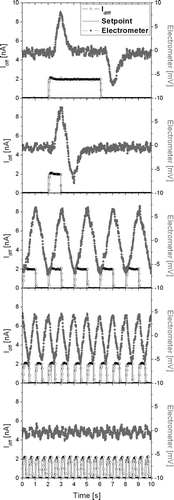
FIG. 5 Determination of lower detection limit with 50 nm NaCl particles. Left: time series of signals measured by CPC and partector for decreasing dilution. Right: averaged values over each concentration step. The line is a guide to the eye. The partector signal deviates from the 1:1 line for low concentrations due to instrument noise.
